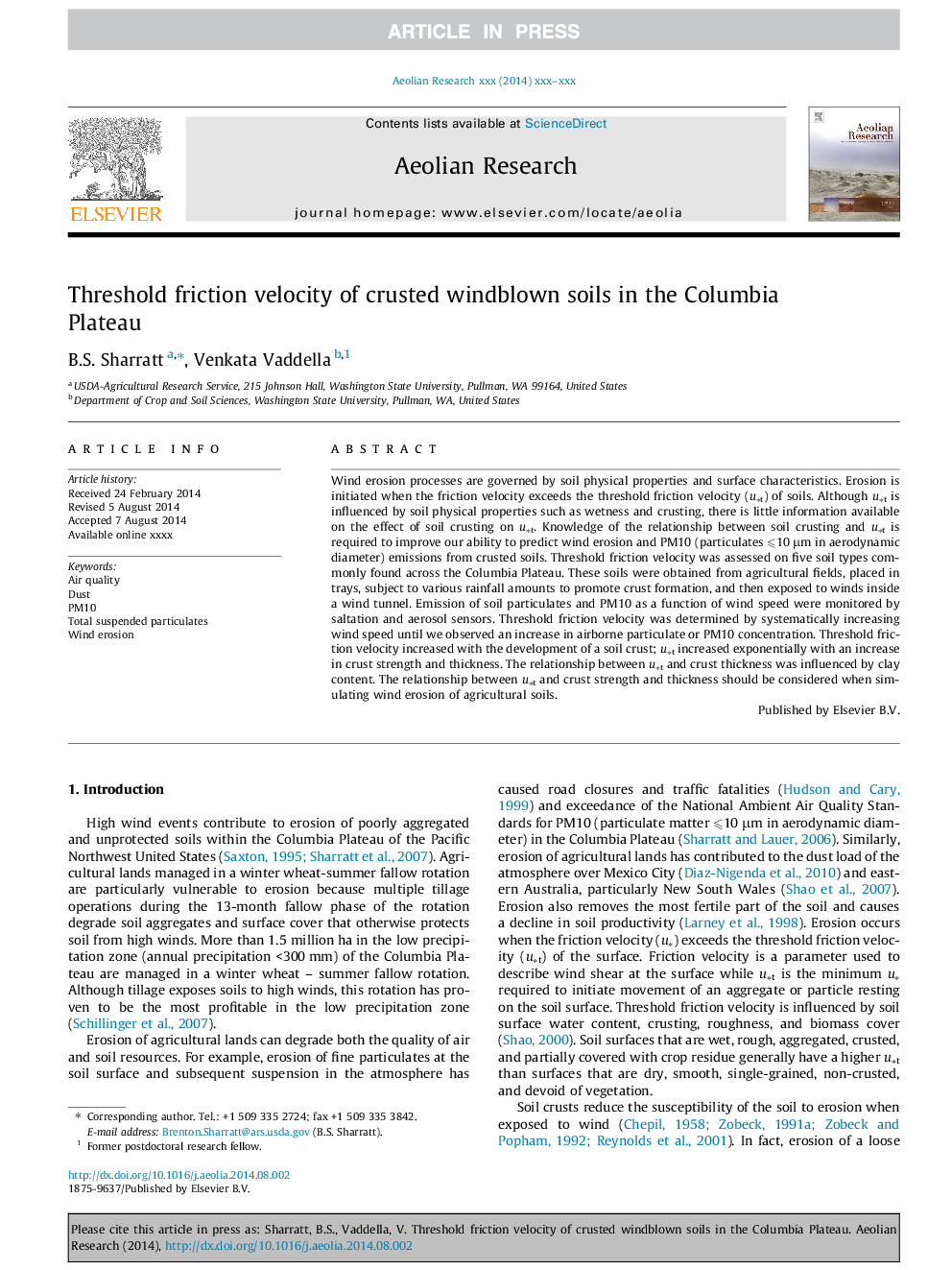| Article ID | Journal | Published Year | Pages | File Type |
|---|---|---|---|---|
| 6426365 | Aeolian Research | 2014 | 8 Pages |
Abstract
Wind erosion processes are governed by soil physical properties and surface characteristics. Erosion is initiated when the friction velocity exceeds the threshold friction velocity (uât) of soils. Although uât is influenced by soil physical properties such as wetness and crusting, there is little information available on the effect of soil crusting on uât. Knowledge of the relationship between soil crusting and uât is required to improve our ability to predict wind erosion and PM10 (particulates ⩽10 μm in aerodynamic diameter) emissions from crusted soils. Threshold friction velocity was assessed on five soil types commonly found across the Columbia Plateau. These soils were obtained from agricultural fields, placed in trays, subject to various rainfall amounts to promote crust formation, and then exposed to winds inside a wind tunnel. Emission of soil particulates and PM10 as a function of wind speed were monitored by saltation and aerosol sensors. Threshold friction velocity was determined by systematically increasing wind speed until we observed an increase in airborne particulate or PM10 concentration. Threshold friction velocity increased with the development of a soil crust; uât increased exponentially with an increase in crust strength and thickness. The relationship between uât and crust thickness was influenced by clay content. The relationship between uât and crust strength and thickness should be considered when simulating wind erosion of agricultural soils.
Related Topics
Physical Sciences and Engineering
Earth and Planetary Sciences
Atmospheric Science
Authors
B.S. Sharratt, Venkata Vaddella,
